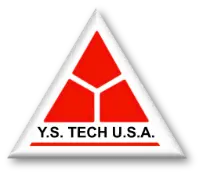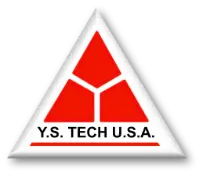Boost your industrial CNC equipment’s lifespan with YS Tech USA’s precision thermal management
You will read a retelling of that race through the lens of thermal management. I will show you what rushing looks like, how disciplined engineering compounds advantage, and how a third option, the tortoise with hare’s legs, gives you speed without fragility. Along the way you will get actionable design checkpoints, fan and blower selection guidance, and links to engineering resources so you can move decisions from theory to production.
## Table of contents
- The hare’s approach
- The tortoise’s approach
- The turning point (the race unfolds)
- Why thermal management matters for CNC machines
- Typical thermal failure points on CNC systems
- YS Tech USA thermal toolkit mapped to CNC needs
- Design workflow from problem discovery to production
- Selection criteria and engineering checklist
- Key takeaways
- FAQ
- About ystechusa
## The hare’s approach
You push a design to market with minimal thermal safeguards. You pick the fastest spindle, stack electronics to save space, and assume ambient shop air will carry the load. You run short validation cycles to keep time to market low and call that lean.
The advantage is immediate. The prototype performs well under controlled conditions. You secure orders. The machine looks great in demo cuts and your sales channel celebrates early wins.
Then reality arrives. Bearings and spindles that ran true in the lab begin to show runout after weeks of continuous duty. Drives that tolerated a quick validation start tripping during hot months. Encoders drift. Your service team sees recurring repairs, and warranty costs climb. The hare’s sprint produces fragile assemblies that need constant firefighting. That cost is real, and it compounds—what seemed like low risk during launch becomes expensive in the field.
## The tortoise’s approach
You deliberately slow the schedule to do the thermal work up front. You measure heat sources, map airflow, and simulate worst-case duty cycles. You specify long-life bearings, conservative bearing preload, and fans with strong L10 ratings. You design conduction paths from semiconductors to heatsinks and choose static-pressure-capable blowers when ducting or filters exist.
The initial launch is slower, and the budget asks for justification. But the results are resilience, fewer service calls, and predictable tolerances under load. Customer trust grows because your uptime is steady, and you reduce scrap and rework. Over a product lifecycle, the tortoise’s method produces better margin and lower warranty drain.
The drawback is time and perceived cost. Stakeholders who want immediate sales will push back. Still, when you model component life and system availability, the long-game economics typically favor careful thermal engineering.
## The turning point (the race unfolds)
At first the hare’s customers cheer. Machines cut faster, sales spike, and gauzy demo videos win orders. But after months of continuous duty you hear the same complaints: increased spindle runout, drive overheating, and repeat shop visits. The financial hit is not just parts; it is lost throughput, dispatch labor, and damaged reputation.
By contrast, the tortoise’s measured approach compounds benefits. Lower operating temperatures follow the Arrhenius principle for electronics, where 10 degrees Celsius change is often tied to significant differences in life expectancy. According to the Arrhenius principle for electronics, roughly every 10°C increase can accelerate aging, and conversely a 10°C decrease can extend component life. You can read the technical background on the Arrhenius equation at the Arrhenius entry on Wikipedia [https://en.wikipedia.org/wiki/Arrhenius_equation].
Then there is the third competitor, the tortoise with hare’s legs. You keep launch cadence but add the engineering guardrails that prevent fragile behavior. You use electronically commutated fans that modulate with load, embed CFD validation early in NPI, and standardize rugged, IP-rated modules so you do not rebuild at the last minute. That hybrid approach delivers launch speed combined with field durability. If you want vendor engineering and product options that match that middle-path philosophy, see YS Tech USA’s product and engineering support pages.
## Why thermal management matters for CNC machines
You work in micron tolerances. Temperature changes deform components. A spindle housing will expand, rails will shift, and preload in bearings will vary with heat. Even a few degrees of non-uniform heating creates axial or radial runout that turns into scrap.
Power electronics are another failure source. Switching losses create hotspots on IGBTs, MOSFETs, and bus capacitors. If you do not channel airflow and remove heat efficiently, those components accelerate toward end of life. Thermal mitigation is not optional; it directly affects MTBF and maintenance cadence.
Finally, you know that downtime costs are not line-item trivialities. A stuck spindle or tripped drive reduces production capacity and creates ripple effects across orders, scheduling, and customer trust. In thermal planning, prevention outperforms cure.
## Typical thermal failure points on CNC systems
Spindle and bearing assemblies
- Bearing friction and thermal gradients change runout and preload. Localized heating can shift tolerances quickly during high-duty runs.
Servo drives, inverters, and motor controllers
- Power semiconductors and DC link capacitors develop hotspots. Without targeted heatsinking and directed airflow, these parts age faster and trip protection more frequently.
Control cabinets and PCBs
- Clustered electronics trap heat in dead pockets. Low-static-pressure axial fans struggle to move air through fine filters, creating stagnant volumes and elevated ambient temperatures.
Encoders and sensors
- Thermal drift reduces feedback accuracy. Heat soak within enclosures increases measurement error and forces recalibration.
Coolant and mist exposure points
- Seals, connectors, and fans need IP protection if coolant or particulate ingress is a risk. Otherwise you get intermittent faults that are hard to diagnose.
## YS Tech USA thermal toolkit mapped to CNC needs
Fans for open-flow cooling
- For low-resistance cabinet ventilation, axial AC or DC fans provide good volume. When you need precise speed control, monitoring, and efficiency, EC fans are the choice. YS Tech USA explains EC fan benefits and lifecycle improvements in a focused article on why EC fans are a practical upgrade for thermal engineers [https://www.ystechusa.com/double-your-industrial-component-lifespan-without-expanding-your-budget-why-ec-fans-are-the-right-choice-for-thermal-engineer-i-45.html](https://www.ystechusa.com/double-your-industrial-component-lifespan-without-expanding-your-budget-why-ec-fans-are-the-right-choice-for-thermal-engineer-i-45.html).
Centrifugal blowers for ducted systems
- When your cooling path has filters, heat exchangers, or long ducts, you need static pressure. Centrifugal blowers with EC motors supply high static pressure and controllable speed for consistent cooling.
Heatsinks and conduction solutions
- Machined or extruded aluminum heatsinks, paired with good thermal interface materials, convert concentrated hotspots into distributed surfaces that forced air can remove.
Ruggedization and IP ratings
- Specify IP-rated fans and sealed connectors for environments with coolant exposure. Use corrosion-resistant leads and test for ingress under production-like conditions.
Control and integration features
- Fans with PWM or telemetry-ready EC motors let you tie cooling to duty cycle and machine state, reducing noise, saving energy, and extending part life.
If you want to see industrial product options and customization capabilities that support these choices, the YS Tech USA product pages list fans, blowers, and heatsinks you can consider [https://www.ystechusa.com/products](https://www.ystechusa.com/products).
## Design workflow from problem discovery to production
Measure and map
- Start with thermocouples on bearings, capacitors, and heatsink bases, and combine those readings with infrared imaging during representative cycles. That combined dataset is your thermal map.
Define a thermal budget
- Assign maximum allowed temperatures for bearings, capacitors, and processors. These targets become pass/fail criteria for prototypes.
Simulate early
- Use CFD as a predictive tool during NPI. Early simulation avoids late-stage mechanical redesign and reduces prototype iterations.
Prototype and validate
- Build instrumented prototypes and run thermal cycling. Log temperatures, duty cycles, and failure modes. Iterate until thermal performance meets your budget across expected ambient extremes.
Scale with support
- Move to production with stocking programs, vendor-managed inventory, and supplier engineering support for rapid iteration when field issues arise.
A realistic engineering example: a mid-sized job shop replaced low-cost axial fans with controllable EC fans and added a small centrifugal blower for a ducted drive bay. Instrumentation showed a cabinet temperature drop of several degrees under heavy duty, and the job shop reported a measurable decline in drive trips and fan replacement intervals over six months, a typical example of how modest investments in cooling design yield durability.
## Selection criteria and engineering checklist
Key specs to require
- Airflow, expressed as CFM at expected static pressure.
- Static pressure in Pa or inches H2O.
- Maximum allowable component temperatures.
- Noise targets in dBA.
- Bearing life or L10 hours (provide expected L10 values).
- Voltage and control interface (PWM, analog, or digital).
- Required IP rating for environment.
Quick supplier questions
- Can you provide CFD validation or thermal modeling?
- What L10 life is offered for the fan?
- Do you have IP-rated configurations and sealed connectors?
- Can you integrate PWM and control signals?
- What reliability tests and data back these parts?
Typical configuration examples
- Spindle cooling: small centrifugal blower with a local spindle heatsink.
- Drive cabinet cooling: EC axial fans with prefilter and ducted exhaust to a heat exchanger.
- Encoder protection: localized air shroud and sealed connector to prevent coolant ingress.
## Key takeaways
- Measure before you spec: thermocouples and IR scans under representative duty cycles guide choices and reduce costly iterations.
- Prefer EC fans when you need control, monitoring, and energy savings; consider centrifugal blowers when your system requires static pressure.
- Small temperature wins compound: the Arrhenius relationship shows that each 10°C reduction can have outsized effects on life expectancy for many electronic parts.
- Use CFD early in NPI to catch airflow problems, then validate with instrumented prototypes and thermal cycling.
- Choose IP-rated and ruggedized components where coolant and particulates are present to avoid ingress failures.
### FAQ
Q: What is the fastest way to find thermal hotspots on a cnc machine?
A: Use a combination of thermocouples for point measurements on components like capacitors and bearings, and infrared imaging to reveal surface gradients. Run both under representative duty cycles and put the combined data into your thermal budget. Repeat tests under ambient extremes to capture worst-case scenarios.
Q: How much life extension can i expect from lowering electronics temperature?
A: The Arrhenius rule of thumb suggests that a 10°C decrease in operating temperature can significantly extend the life of many components. The exact improvement depends on component type, stressors, and duty cycle. Use component datasheets, thermal modeling, and accelerated aging tests to quantify expected MTBF gains.
Q: When do i choose a centrifugal blower over an axial fan?
A: Choose centrifugal blowers for high-resistance cooling paths, such as long ducts, filters, or heat exchangers. Axial fans are fine for free-flow cabinet ventilation. For static pressure and controllability, centrifugal blowers with EC motors are often best.
Q: Are ec fans worth the extra cost for production machines?
A: Yes when you need precise speed control, telemetry, and energy savings. EC fans let you tune cooling to the thermal load, lowering noise and reducing wear. For detailed discussion on EC fan lifecycle benefits, consult the YS Tech USA article on why EC fans are a right choice for thermal engineers [https://www.ystechusa.com/double-your-industrial-component-lifespan-without-expanding-your-budget-why-ec-fans-are-the-right-choice-for-thermal-engineer-i-45.html](https://www.ystechusa.com/double-your-industrial-component-lifespan-without-expanding-your-budget-why-ec-fans-are-the-right-choice-for-thermal-engineer-i-45.html).
Q: how should i specify ip ratings for fans in a wet or coolant-prone environment?
A: Classify exposure first. For splash and particulate conditions, IP55 is often the minimum. For immersion risk or heavy contamination, IP67 or higher may be required. Also specify sealed connectors and corrosion-resistant leads and validate with ingress and vibration tests under production-like conditions.
## About YS Tech USA
YS Tech USA is a designer and manufacturer of thermal management solutions, specializing in low-noise, high-performance dc axial fans, blowers, and heatsinks. Their r&d center uses modern design tools to support custom parts, and their product pages list industrial fan, blower, and heatsink options you can use for cnc applications at https://www.ystechusa.com/products. For company background and capabilities see the about page at https://www.ystechusa.com/company/about-ys-tech. YS Tech supports npi with simulation, prototype runs, and production scalability so you can move from pilot to volume with fewer surprises.
Do you want to choose tortoise where it counts, and add hare legs where they matter most?



